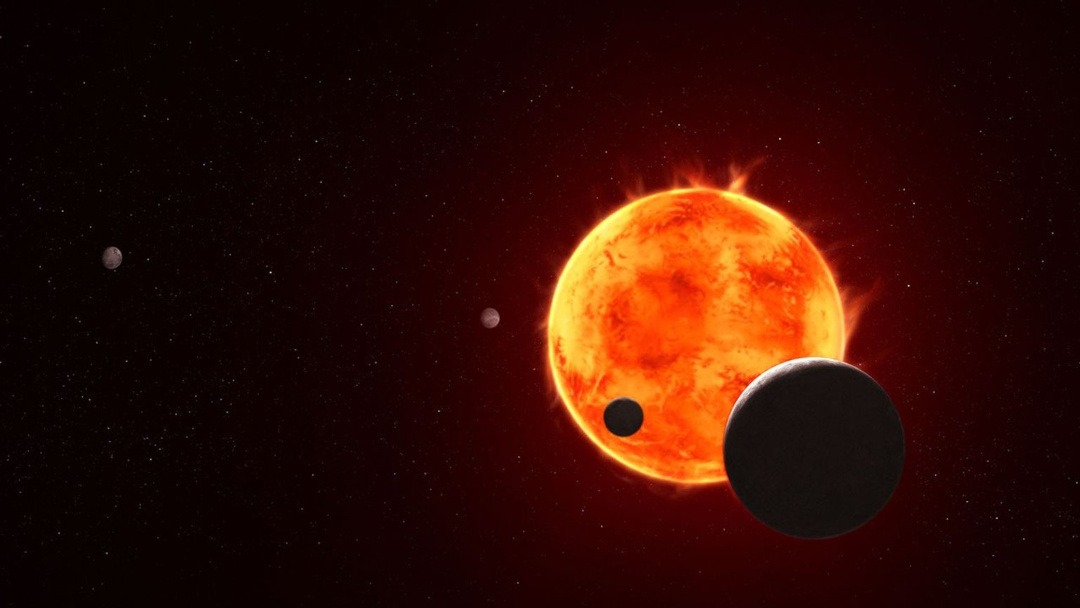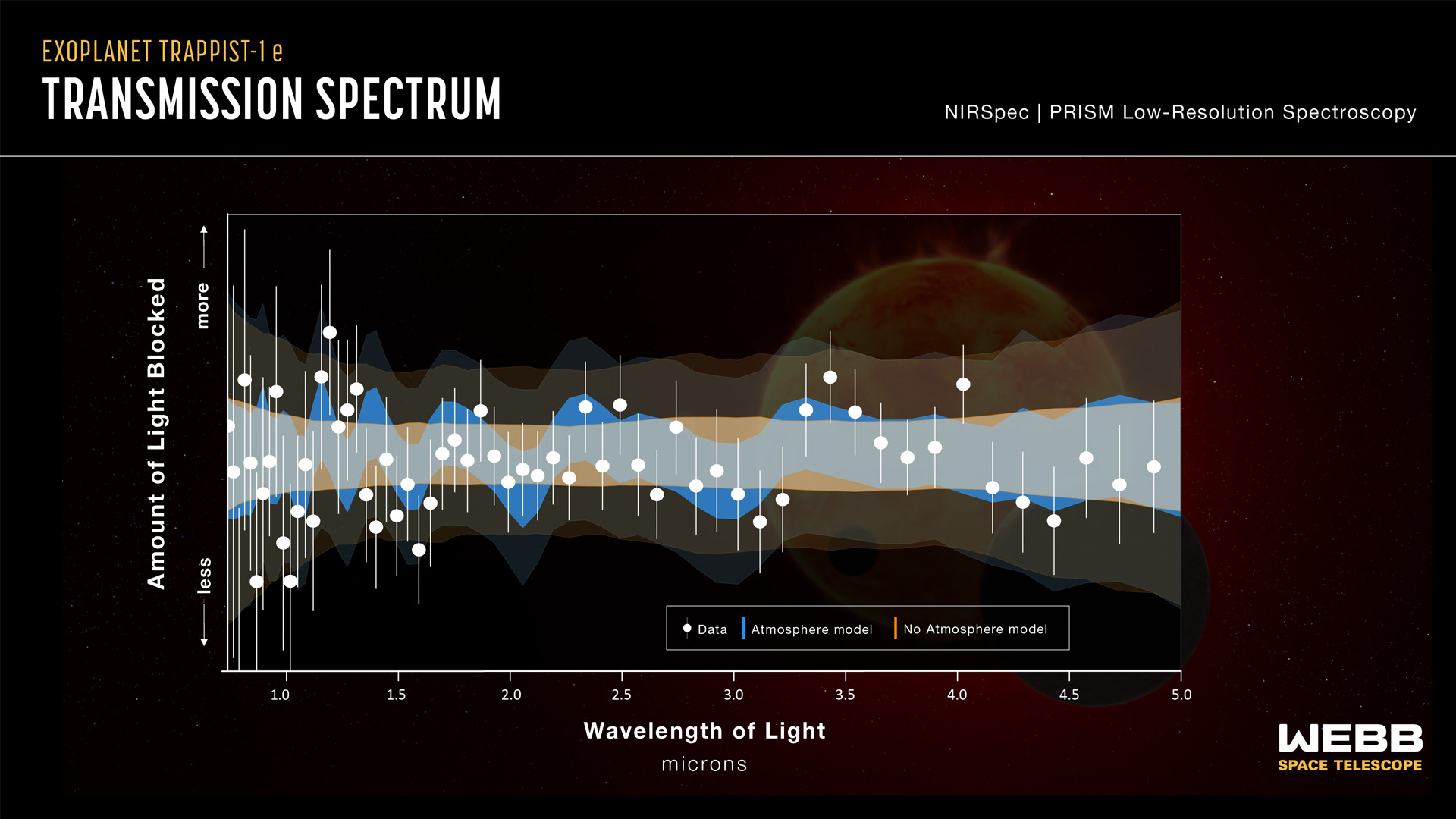The TRAPPIST-1 system is a system of seven known planets orbiting a red dwarf star named TRAPPIST-1 that is located 40 light years away from Earth. Red dwarfs are much redder and dimmer than our Sun. Their small size and relatively cool temperature cause them to produce more stellar flares than our Sun. These flares send energetic particles outwards from the star, blasting nearby planets with radiation that can strip away their atmosphere.

Artistic rendition of the TRAPPIST-1 System. [Image Credit: NASA, ESA, CSA, STScI, Joseph Olmsted (STScI)]
Since the first discovery of a planet orbiting another star in 1999, astronomers have dedicated significant observing time to finding potentially habitable planets. These exoplanets are extremely dim compared to their parent star, so astronomers have to get creative with how they observe these planets. One method, instead of imaging the planets directly, measures the light from a star periodically dimming as the planet passes in front of it, also known as transiting, the star.
The James Webb Space Telescope (JWST) has been observing the TRAPPIST-1 system
since 2022 using the NIRSpec instrument. NIRSpec observes infrared light from the
star, spreading the light out like a prism and measuring the intensity of it at
various wavelengths. This instrument allows astronomers to model the atmospheres
of the transiting planets. In order to do so, astronomers compare the light of
the star during transit to that only of the star. While transiting, the atmosphere
of the planet absorbs some of the light from the star at specific wavelengths.
This is because molecules absorb specific wavelengths like a fingerprint.
Three of the planets in this system orbit in a region around the star known as the habitable zone. While the habitable zone doesn’t make any guarantee about a planet’s ability to host life, it does provide a constraint on where water-based life could potentially exist given numerous other variables. The habitable zone also varies by star; because TRAPPIST-1 is a smaller, cooler red dwarf, the habitable zone is much closer to the star than the Sun’s habitable zone. The three known planets within its habitable zone are labeled with the letters e, f, and g:
TRAPPIST-1 e
TRAPPIST-1 e lies inside its star's habitable zone. The planet has roughly 0.92 Earth radii and about 0.69 Earth masses. TRAPPIST-1 e orbits its star at a distance of 0.02925AU, or 2.925% the distance from the Earth to the Sun. Because TRAPPIST-1 e orbits so closely to its star, it is tidally locked so that the same side of the planet faces the star at all times. The side that permanently faces the star experiences extreme heat and light at all times, while the side facing away from the star receives little light and remains extremely cold. Because of the extreme temperatures on tidally locked planets, potential habitability is much more limited than a non-tidally locked planet. Recent JWST observations suggest TRAPPIST-1 e lost its original hydrogen-helium atmosphere. However, only four transits were observed, meaning that astronomers don't have enough data to rule out the existence of a secondary carbon dioxide atmosphere.

Transmission spectrum graph from JWST observations of TRAPPIST-1 e [Image Credit: NASA, ESA, CSA, STScI, Joseph Olmsted (STScI)]
TRAPPIST-1 f
TRAPPIST-1 f also orbits within the habitable zone, although further away than TRAPPIST-1 e. The planet is roughly 1.045 Earth radii and about 1.039 Earth masses, slightly larger than TRAPPIST-1e. Because TRAPPIST-1 f is a terrestrial planet with mass and radius greater than that of Earth’s, it is known as a Super Earth. Orbiting 0.03849 AU from TRAPPIST-1 in a period of just 9.2 days, TRAPPIST-1 f is also tidally locked.
TRAPPIST-1 g
Like TRAPPIST-1 f, TRAPPIST-1 g is a Super Earth with radius 1.129 times that of Earth and a radius 1.321 times Earth’s. The planet orbits at a distance of 0.04683 AU from its star in a period of 12.4 days, farther out than TRAPPIST-1 g.
Keep an eye out for future press releases as JWST continues probing into this exoplanetary
system.